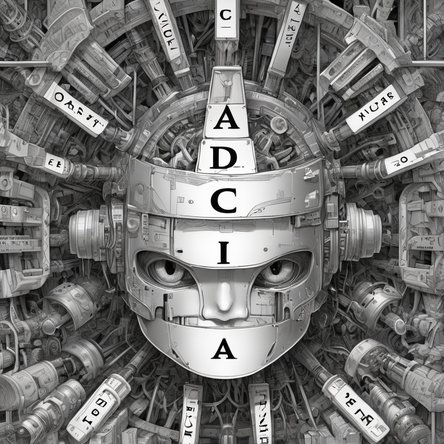Understanding CAPTCHA Work: A Comprehensive Guide
CAPTCHA, which stands for Completely Automated Public Turing test to tell Computers and Humans Apart, is a technology designed to differentiate human users from automated bots. This mechanism is essential in maintaining the security and integrity of websites and online services, preventing unauthorized access and malicious activities. CAPTCHA work, therefore, involves the various processes and methodologies employed to develop, implement, and refine these human verification systems.
The Evolution of CAPTCHA
The concept of CAPTCHA has evolved significantly since its inception. The earliest forms of CAPTCHA were simple text-based challenges that required users to decipher distorted letters and numbers. These early versions were relatively easy to implement but quickly became vulnerable as bots grew more sophisticated.
As technology advanced, CAPTCHA systems became more complex, incorporating various forms of media and interactive elements. Modern CAPTCHAs now include image-based challenges, audio tests, and behavioral analysis to improve accuracy and user experience. This evolution reflects the ongoing arms race between security developers and malicious actors seeking to bypass these protective measures.
Types of CAPTCHA
There are several types of CAPTCHA, each with its own strengths and applications. The most common types include:
Text-based CAPTCHA: This is the traditional form of CAPTCHA that presents users with distorted text that they must decipher. While still in use, it has become less prevalent due to its susceptibility to advanced OCR (Optical Character Recognition) technologies.
Image-based CAPTCHA: These CAPTCHAs require users to identify specific objects or patterns within a set of images. For example, users might be asked to select all images containing traffic lights or storefronts. This type of CAPTCHA leverages the human brain's superior visual processing abilities compared to machines.
Audio CAPTCHA: Designed to be accessible to visually impaired users, audio CAPTCHAs present a series of spoken characters or words that the user must transcribe. These CAPTCHAs are less common due to their vulnerability to speech recognition software.
Behavioral CAPTCHA: Rather than presenting a traditional challenge, behavioral CAPTCHAs analyze the user's interactions with the website to determine whether they are human. This might include tracking mouse movements, keystroke dynamics, or the time taken to complete certain actions.
NoCAPTCHA reCAPTCHA: Developed by Google, this system asks users to simply check a box stating "I'm not a robot." It then uses a combination of behavioral analysis and risk assessment to determine if further verification is necessary. If needed, it may present additional challenges such as image-based tests.
How CAPTCHA Works
The underlying mechanism of CAPTCHA involves generating challenges that are easy for humans to solve but difficult for automated systems to crack. Here’s a detailed look at how these challenges are created and validated:
Challenge Generation: CAPTCHA systems generate a variety of challenges based on the chosen type. For text-based CAPTCHAs, this involves distorting text in a way that is still recognizable to humans but difficult for OCR software. Image-based CAPTCHAs select images that contain specific objects and present them in a grid format for identification.
Challenge Presentation: The generated challenge is then presented to the user. This process must ensure that the challenge is clearly visible or audible while still being secure against automated interpretation.
User Response: The user interacts with the challenge, providing their response by typing the deciphered text, selecting the appropriate images, or transcribing audio. The response is then submitted for validation.
Validation: The CAPTCHA system compares the user’s response against the correct answer. If the response matches, the user is verified as human and granted access. If not, they may be prompted to try again or face additional challenges.
Security Measures: To maintain effectiveness, CAPTCHA systems incorporate various security measures to prevent circumvention. This includes techniques like randomizing challenge elements, employing time-based restrictions, and using machine learning models to detect abnormal interaction patterns.
The Role of Machine Learning in CAPTCHA
Machine learning plays a critical role in the development and refinement of CAPTCHA systems. By analyzing vast amounts of data, machine learning algorithms can identify patterns and improve the accuracy of CAPTCHA challenges. This includes enhancing the generation of more complex and varied challenges as well as improving the detection of bot behavior.
For example, Google's reCAPTCHA system uses machine learning to analyze user interactions and assess the likelihood of a user being a bot. It continuously learns from real-world interactions, adapting its challenges to stay ahead of evolving bot capabilities. This dynamic approach makes CAPTCHA systems more robust and resilient against automated attacks.
CAPTCHA and Accessibility
While CAPTCHA systems are essential for security, they can pose significant challenges for users with disabilities. Recognizing this issue, developers have implemented various accessibility features to make CAPTCHA more inclusive:
Audio CAPTCHAs: As mentioned earlier, audio CAPTCHAs provide an alternative for visually impaired users. However, ensuring clarity and preventing automated speech recognition abuse remain ongoing challenges.
Alternative Verification Methods: Some systems offer alternative methods of verification, such as SMS-based codes or email verification, to accommodate users who cannot interact with traditional CAPTCHA challenges.
User Experience Considerations: Developers strive to balance security and usability, minimizing the frustration caused by CAPTCHA challenges. This includes optimizing the difficulty of challenges and reducing the frequency of required verifications.
The Future of CAPTCHA
The future of CAPTCHA lies in striking a balance between security, usability, and accessibility. As bots become increasingly sophisticated, CAPTCHA systems must continue to evolve. This includes leveraging advanced technologies such as artificial intelligence, behavioral biometrics, and multi-factor authentication.
Artificial Intelligence: AI-driven CAPTCHA systems can create more dynamic and adaptive challenges, making it harder for bots to bypass them. AI can also improve the analysis of user behavior, enhancing the accuracy of human verification.
Behavioral Biometrics: This emerging field involves analyzing unique user behaviors, such as typing patterns and mouse movements, to distinguish humans from bots. Behavioral biometrics offers a seamless and non-intrusive verification method that can complement traditional CAPTCHA systems.
Multi-Factor Authentication: Combining CAPTCHA with other forms of authentication, such as biometrics or one-time passwords, can provide an added layer of security. This multi-faceted approach reduces the reliance on a single verification method and enhances overall protection.
Ethical Considerations in CAPTCHA Implementation
The implementation of CAPTCHA systems also raises ethical considerations, particularly regarding privacy and user consent. As CAPTCHA systems increasingly rely on behavioral analysis and machine learning, it is essential to address these concerns transparently:
Data Privacy: CAPTCHA systems must handle user data responsibly, ensuring that behavioral and interaction data is anonymized and securely stored. Transparency in data usage policies is crucial to maintain user trust.
User Consent: Users should be informed about the presence of CAPTCHA and its purpose. Providing clear explanations and obtaining user consent for data collection can mitigate privacy concerns.
Balancing Security and Usability: While security is paramount, it should not come at the expense of user experience. Striking the right balance between challenge difficulty and accessibility is key to effective CAPTCHA implementation.
Conclusion
CAPTCHA work is a dynamic and evolving field that plays a crucial role in safeguarding online platforms from malicious activities. By leveraging advanced technologies and addressing accessibility and ethical considerations, CAPTCHA systems can continue to provide robust protection while enhancing user experience. As the digital landscape evolves, the ongoing refinement of CAPTCHA will be essential in maintaining the delicate balance between security and usability.



